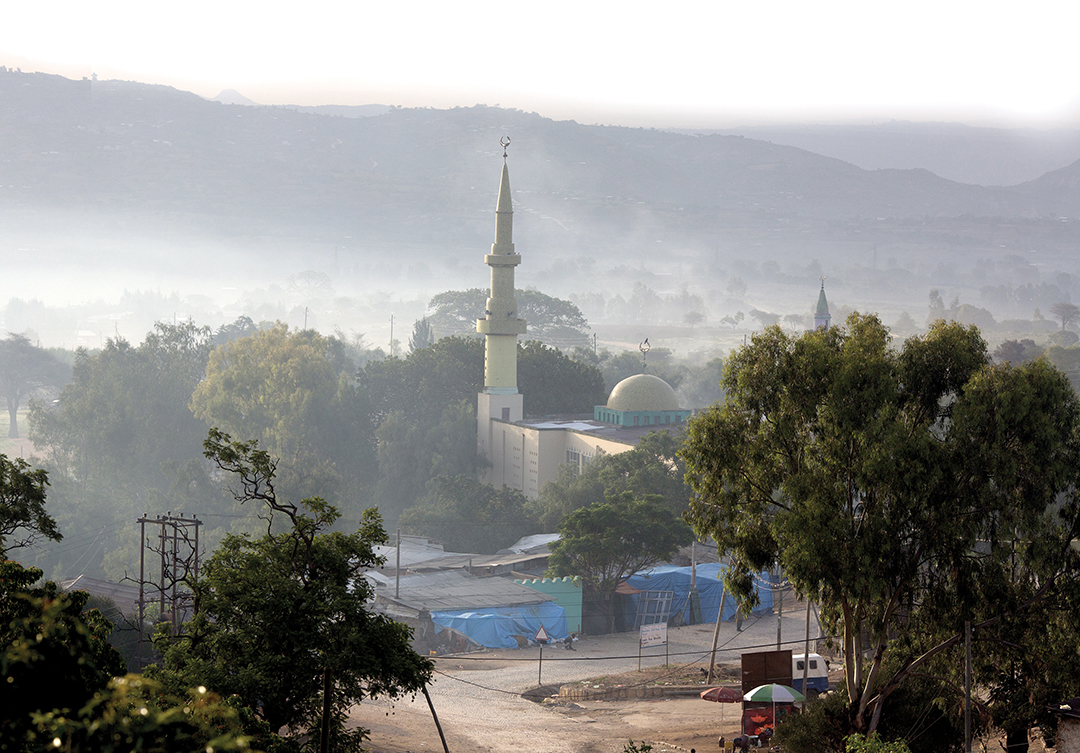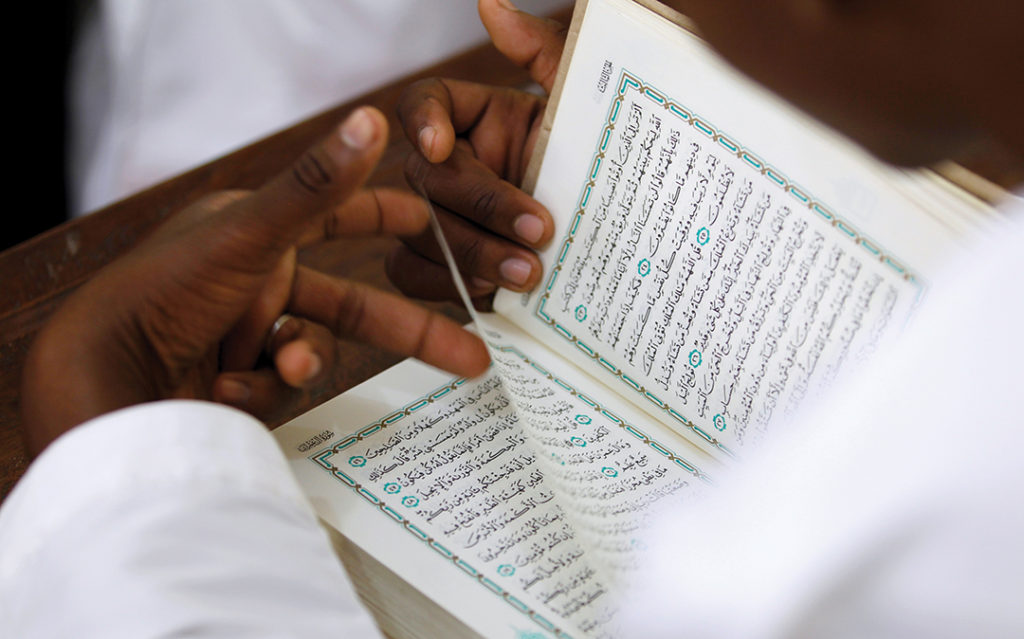The Introduction of Salafist Ideology in East Africa Has Erased Long-Standing Peaceful Coexistence Among Religious Groups
BY ABDISAID M. ALI
Abdisaid M. Ali is the regional political advisor for the Office of the European Union Special Representative for the Horn of Africa. His views do not necessarily reflect the official opinion of the European Union. This article originally was published by the Africa Center for Strategic Studies, and it has been edited to fit this format.
The risk of Islamist extremism frequently focuses on Somalia and al-Shabaab. Yet adherents to extremist versions of Islam can now be found throughout East Africa. As a result, tensions within Muslim communities and between certain Islamist groups and the broader society have been growing.
The genesis of this is largely the externally driven diffusion of Salafist ideology from Gulf states. Buoyed by the global oil boom and a desire to spread the ultraconservative Wahhabi version of Islam throughout the Muslim world, funding for mosques, madrassas, and Muslim youth and cultural centers began flowing into the region at greater levels in the 1980s and 1990s. Opportunities for East African youth to study in the Arab world expanded. As these young people returned home, they brought with them more rigid and exclusivist interpretations of Islam. The expanding reach of Arab satellite television has reinforced and acculturated these interpretations to a wider audience.

Over time, these tensions have turned violent. Attacks by militant Islamists against civilians in East Africa (outside of Somalia) rose from just a few in 2010 to roughly 20 per year since then. The vast majority of these have been in Kenya.
Connections between the region and the global jihad movement also appear to be expanding. The rising violence of Islamist extremists has generated a strong response from security actors in East Africa. At times, these operations are conducted indiscriminately. The result may be more support for violent Islamist groups.
In short, Islamist extremist ideology has been spreading throughout East African communities — bringing with it greater societal polarization and violence. Further escalation is not inevitable, however. The region has a long tradition of interreligious harmony. It is vital for East African governments and citizens to understand the external and domestic drivers of these extremist ideologies, so that the process of radicalization can be interrupted before it cements itself within local communities and grows increasingly violent.
The Evolution Of Islam
Muslims have lived in East Africa for generations. Trade and cultural exchanges between East Africa and the Arab world are centuries old. Muslims seem to comprise 10 to 15 percent of the population in Kenya and Uganda and 35 to 40 percent of the Tanzanian population.
There has never been a uniform Islamic community in East Africa. Most East African Muslims subscribe to Sunni interpretations of Islam, though there are also Shia communities and members of the Ahmadiyya sect. Sufism, often described as a “mystical” interpretation of Islam that includes the veneration of saints, is also common. Some Muslim communities have absorbed practices and rituals from traditional African beliefs. Despite these differences, religious communities in the region have historically coexisted peacefully.
This has changed for some communities in recent decades as a result of the growing influence of Salafist ideology. A small but growing number of Muslims have adopted more exclusivist interpretations of their religion, thereby changing their relationship with other Muslims, with other faiths and with the state.
One channel by which this shift has occurred is through education. Lacking other opportunities for schooling, Muslim families in marginalized areas rely on madrassas, or Islamic schools. Over the past several decades, these madrassas have been the beneficiaries of growing streams of funding from Arab countries. In the process, students have been steadily exposed to the cultural and religious identity of their sponsors.
Opportunities for tertiary education have also expanded. While college degrees in the West continue to be viewed as most prestigious, after the 2001 World Trade Center attacks, Western countries raised immigration hurdles. At the same time, scholarship opportunities in the Arab world were ramping up. This trend has been accelerating since 2010.
The expansion in the number and geographic reach of Arab satellite TV stations in the 1990s and 2000s brought Arab cultural norms to a wider audience in East Africa. This fostered more conservative interpretations of Islam.

In Tanzania, extremist clerics now aggressively challenge the authority of more moderate Islamic organizations and incite protests and clashes with government bodies.
External Influences
A major contributing factor to East Africa’s shift toward more militant interpretations of Islam is the influence of well-funded foreign Islamist groups in Saudi Arabia, Qatar and other oil-rich Gulf states. Wahhabism is an extremely conservative interpretation of the Quran. It forbids most aspects of modern education, requires strict dress codes, abides by ancient traditions of social relations, and disregards many basic human rights, particularly for women. Many Wahhabi preachers do not tolerate other viewpoints.
Foreign-sponsored East African Muslim groups have had a presence in East Africa since the mid-20th century but have expanded significantly since the 1970s, according to East Africa-based journalist Ioannis Gatsiounis. The aims of the foreign funding are diffuse, going to social centers; madrassas; primary, secondary and tertiary educational institutions; and to humanitarian and social programs.
Some activities supported by these foreign Islamic groups are laudable. They have sponsored medical care and provided aid during disasters. However, many of these groups will integrate proselytization into all their activities or will require that participants abide by strict, conservative customs to access funds or benefits, according to Humboldt University’s Chanfi Ahmed.
Educational institutions have obvious strategic value in shaping the beliefs of youth. Some of these schools provide valuable instruction in math, sciences and more. However, they also inculcate a rigid interpretation of Islam that is exclusionary and emphasizes da’wa, or the further proselytization of this brand of Islam.
This growing influence of extremist Islam in East Africa has mostly been limited to particular neighborhoods, cities or regions. But those effects have been cumulative and compounding, leading an increasing number of groups in the region to adopt progressively more aggressive and confrontational missions.
Socio-Economic Grievances
Although the extremist Islamist ideology taking hold in East Africa is imported from elsewhere, exacerbating factors play a role in how the ideology resonates. Socio-economic marginalization fuels the credibility and dispersal of extremist narratives. In East Africa, perceptions of unequal socio-economic status and some ill-advised state actions have nudged Muslims toward more conservative tendencies and enabled “us-versus-them” narratives to resonate.
East African Muslims do have legitimate grievances. Youth unemployment in Kenya’s Muslim-dominated Coast and North Eastern provinces are 40 to 50 percent higher than the national average, according to the United Nations Development Programme. Rates of primary and secondary school completion and attendance tend to be lower in Muslim counties. Similar patterns can be seen in Tanzania. The youth unemployment rate on the overwhelmingly Muslim island of Zanzibar has been about 17 percent in recent years, almost twice the national average of 9 percent, according to the Tanzania Daily News and the Tanzanian government.
Claims that Muslims are deliberately denied economic, educational and other opportunities relative to their non-Muslim compatriots have become common within the region’s Muslim communities, moderate and extremist alike. For many Muslims, particularly youth, such inequality validates the divisive messages of fundamentalist Islamic centers, madrassas and mosques.
Government Actions That Alienate
East African governments have pursued legal action against various Muslim leaders in recent years in an attempt to isolate suspected extremists. Unfortunately, many of these judicial efforts have failed, further reinforcing a sense that the government is unfairly persecuting Muslims.
Prominent Muslim leaders in Kenya and Tanzania have also been detained by security agents without charge. Some have been mysteriously assassinated. Allegations of police-sponsored death squads that target radical Muslim leaders have been circulating widely for years.
The lack of transparency and pattern of haphazard arrests, bail policies and prosecutions have made many Muslims suspicious of political leaders and state institutions. Combined with a sense that they have been economically marginalized, many are increasingly disinclined to work through existing governance structures in order to right perceived wrongs. As a result, extremist and exclusivist Islamic narratives can seem more compelling.
Reversing The Spread Of Extremism
The drivers of Islamist extremism in East Africa are external and internal. A framework for redressing this threat, therefore, will require actions on both levels.
Counter external influences and emphasize domestic traditions of tolerance: Governments and civil society groups need to counter destabilizing, exclusivist narratives by emphasizing the region’s much longer history of religious diversity and tolerance. This will take genuine and patient engagement on behalf of political leaders, as well as indirect efforts to support more interreligious dialogue that yields tangible benefits for participants.
As part of reinforcing indigenous, tolerant traditions, governments will have to address funding by foreign, fundamentalist Islamic entities. This will require adopting transparent and consistent means to regulate the funding sources, sectarian rhetoric and militant leanings of religious groups. Groups that promote violence or open confrontation should be banned and prosecuted. In addition, funding for social services should be separated from proselytization. However, blanket criminalization of conservative Islamic groups should be avoided because this will likely spur more support for violent movements.
Improve political inclusion of Muslim communities: Political leaders should acknowledge that Muslims have some legitimate complaints of marginalization. This alone will send a powerful message to Muslim constituencies and may spark a sense of trust in collaboration and reform. Leaders should also expand engagement with Muslim communities.
Invest in citizens economically and institutionally: Socio-economic inequalities must be addressed so they are minimized as legitimate grievances. Programs should target inequality of education, income and opportunity, regardless of whether the root cause is truly religious discrimination or a symptom of regional, urban or rural dynamics. Programs could aim to boost employment levels in Muslim-majority areas.
Strengthening and clarifying property codes and land rights would also help. Strengthened property rights may ease religious tensions and allow for the growth and political engagement of a successful Muslim middle class.
Education is also key. Muslim-dominated regions of East Africa lag behind in the number and quality of schools and teacher-to-student ratios. Politically, even small, quick improvements to facilities in these regions could build goodwill. Longer term, more Muslim youth should be targeted for scholarships to balance the effects from external ideological influences.
Practice due process: Governments must also understand that perceptions matter when countering radical ideology. Individuals who stir others to violence are certainly a threat to stability. However, if the public does not believe that legal processes are being followed, then police actions can further fuel support for radicals and their messages. Adhering to the law reinforces its value in the minds (and actions) of these marginalized communities.
Governments should thus avoid expansive legal actions that are likely to fail in court. Instead, they should focus on improving law enforcement procedures, evidence collection and building prosecutorial capacity.
Extrajudicial police action must also stop. The government should instead support transparent, credible investigations by independent experts to evaluate claims that Islamic leaders were killed by anyone connected to the state or political leadership.
These efforts should not focus on particular individuals who may come and go irrespective of the wider resonance of their views. Instead, they must delegitimize the ideology of violent extremism itself.

